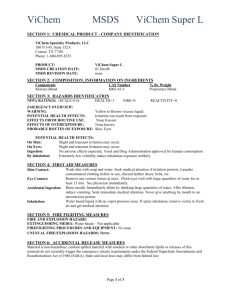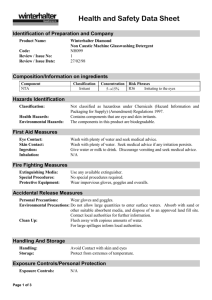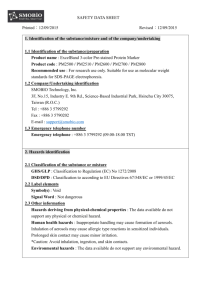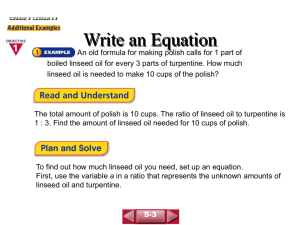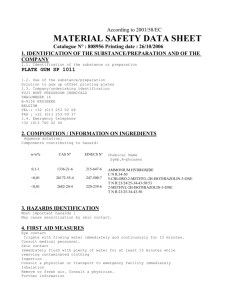Chemical Risk Assessment - Queensland Corrective Services
advertisement
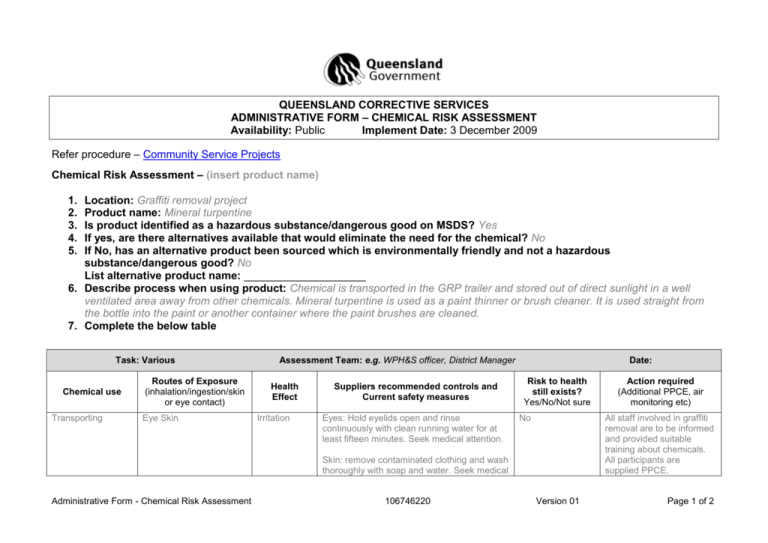
QUEENSLAND CORRECTIVE SERVICES ADMINISTRATIVE FORM – CHEMICAL RISK ASSESSMENT Availability: Public Implement Date: 3 December 2009 Refer procedure – Community Service Projects Chemical Risk Assessment – (insert product name) 1. 2. 3. 4. 5. Location: Graffiti removal project Product name: Mineral turpentine Is product identified as a hazardous substance/dangerous good on MSDS? Yes If yes, are there alternatives available that would eliminate the need for the chemical? No If No, has an alternative product been sourced which is environmentally friendly and not a hazardous substance/dangerous good? No List alternative product name: ____________________ 6. Describe process when using product: Chemical is transported in the GRP trailer and stored out of direct sunlight in a well ventilated area away from other chemicals. Mineral turpentine is used as a paint thinner or brush cleaner. It is used straight from the bottle into the paint or another container where the paint brushes are cleaned. 7. Complete the below table Task: Various Chemical use Transporting Routes of Exposure (inhalation/ingestion/skin or eye contact) Eye Skin Assessment Team: e.g. WPH&S officer, District Manager Health Effect Irritation Suppliers recommended controls and Current safety measures Eyes: Hold eyelids open and rinse continuously with clean running water for at least fifteen minutes. Seek medical attention. Date: Risk to health still exists? Yes/No/Not sure No All staff involved in graffiti removal are to be informed and provided suitable training about chemicals. All participants are supplied PPCE. Skin: remove contaminated clothing and wash thoroughly with soap and water. Seek medical Administrative Form - Chemical Risk Assessment 106746220 Action required (Additional PPCE, air monitoring etc) Version 01 Page 1 of 2 attention Safety measures: minor use – safety goggles and PVC or natural rubber gloves. Larger quantities or if sprayed – use chemical resistant safety goggles, gloves and overalls may be required. In confined spaces use air supplied breathing apparatus. Decanting Inhalation & Skin & Eye Contact Rinsing Inhalation & Skin & Eye Contact 8. Spill containment action required: remove workers from affected area. Wear protective equipment as specified for handling. Cover with absorber. Sweep up and collect in sealable containers. Dispose to approved land-fill. 9. Disposal instructions: Where possible return to supplier. Otherwise dispose by controlled incineration or approved land-fill. 10. Fire/Explosion control: Flammable. Sealed containers may explode if heated. Extinguish using foam or carbon dioxide. 11. Fire Extinguisher type: 12. Storage requirements (if classified as dangerous good): N/A Administrative Form - Chemical Risk Assessment 106746220 Version 01 Page 2 of 2
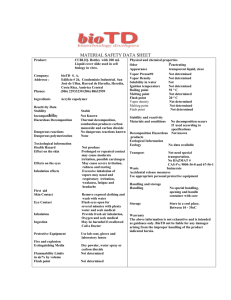
![[Agency] recognizes the hazards of lead](http://s3.studylib.net/store/data/007301017_1-adfa0391c2b089b3fd379ee34c4ce940-300x300.png)




